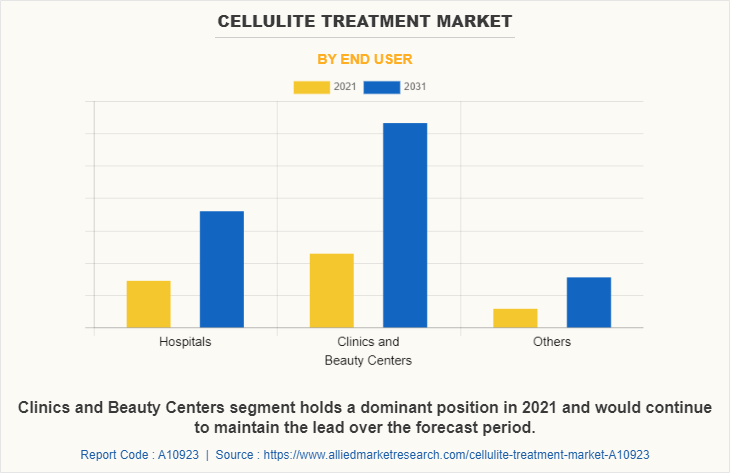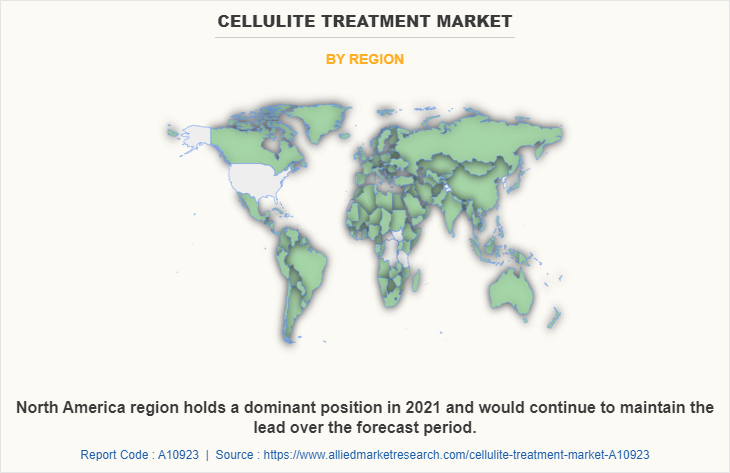The market for cellulite treatments was valued at USD 2.1 billion in 2021. It is expected to grow significantly, reaching an estimated value of USD 5.7 billion by 2031. This expansion reflects a compound annual growth rate (CAGR) of 10.3% from in 2022 to 2031.
Cellulite is a widespread and harmless skin condition characterized by lumps of dimpled flesh commonly found on the thighs, hips, buttocks and abdomen. It occurs more often in women. Cellulite forms when the skin covering certain areas of fat is pulled down into deeper tissues by bands of connective tissue, resulting in an uneven surface. This condition is caused by the accumulation of fat under the skin, with some women being more genetically predisposed to it than others.
Cellulite treatments aim to reduce the visibility of these dimples and include various methods such as non-invasive, minimally invasive and topical treatments.
Get a sample copy of this report:


The increasing rate of obesity, due to consumption of fast food and sedentary lifestyle, is a major factor driving the growth of the cellulite treatment market. Increased weight and obesity contribute significantly to the development of cellulite. Additionally, the increase in cosmetic procedures and the proliferation of cosmetic clinics are boosting the market expansion. According to a 2020 survey by the International Society of Aesthetic Plastic Surgery (ISAPS), approximately 10,129,528 cosmetic procedures were performed worldwide, highlighting the growing demand.
Several factors are driving the growth of the cellulite treatment industry, including increased healthcare spending, increase in cosmetic procedures, and advancements in treatment technologies. The desire for an attractive physical appearance is also fueling the growth of the market. Proliferation of cosmetic hospitals, higher healthcare spending and increased awareness of advanced cellulite treatments are key factors. The increase in private hospitals offering advanced treatments and increasing number of professionals doing cosmetic procedures are further boosting the market expansion. The adoption of new technologies in hospitals also plays a key role.
Research and development activities aimed at creating advanced cellulite treatment tools, new product approvals by authorities such as the US FDA, and product launches are important growth drivers. Improved health care facilities in developing countries and rising health care expenditures also contribute positively. However, the high cost of advanced treatments and underdeveloped healthcare infrastructure in some regions may hinder the growth of the market.
The cellulite treatment market segmented by procedure type, cellulite type, end user, and region. By procedure type, it includes non-invasive, minimally invasive and local treatments. Non-invasive treatments dominated the market in 2021 and are expected to maintain this trend due to their increasing adoption and technological advancements.
Based on the type of cellulite, the market is segmented into soft, hard and edematous cellulite. The hard cellulite segment led the market share in 2021 and is expected to continue its dominance due to the increasing number of skin conditions and cosmetic procedures.
By end user, the market is categorized into hospitals, clinics and beauty salons, and others. Clinics and beauty centers dominated the market in 2021 and are expected to continue to lead due to increased visits for cellulite treatment and prevalence of hard cellulite.
Key market players
- Cynosure Technologies
- Merz Pharma GmbH & Co. KGaA
- Zimmer Aesthetics
- Galderma SA
- Bausch Health Companies Inc.
- Abbvie Inc
- Sinclair Pharmaceuticals Limited
- Candela Syneron
- Hologic Inc
- Endo International plc
- Zimmer
- Aesthetics
- Regularly
- Inceler Medikal Co. Ltd.


Regionally, North America held the largest market share in 2021 and is expected to continue to dominate due to high incidence of cellulite, advanced healthcare infrastructure, and presence of key market players. However, the Asia Pacific region is projected to experience significant growth, owing to the increasing prevalence of cellulite, improvements in healthcare infrastructure, and large population base.


